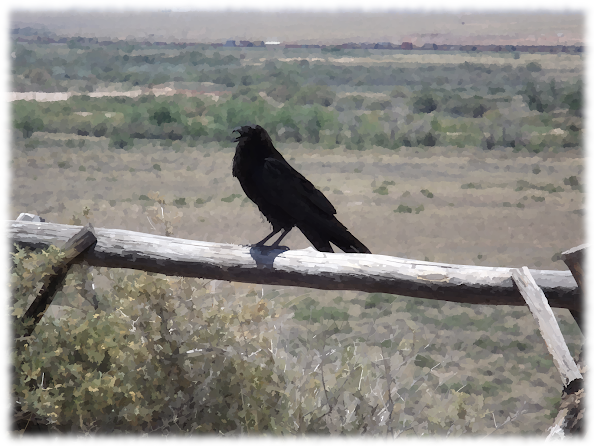What makes an apocalyptic story? part 2
As a writer, what draws me to the apocalyptic storylines is the
wealth of storyboard material. Stories hinge on points of conflict. Apocalyptic
scenarios abound with conflict. What makes an apocalypse so disruptive is the
sudden deviation from the normal to a volatile nature.
I live in a rural setting. During hurricane season, we can
realistically expect at least a week without power at some point. Even indirect
hits from hurricanes can cause major disruptions to fuel, food, and power
supplies. Most people in this region prepare for the season months in advance -
stockpiling food, basic house supplies, and fuel. I see similar community
behaviors in rural areas regarding winter seasons in my travels through the
American mid and north-west.
An apocalyptic storyline takes this mentality and extends it over
months and years. Depending on which time frame the writer is focusing on, the
struggle will either be one of struggling to reconcile the previous norm's loss
and attempts to establish the new norm or the new norm and its comparisons to
the previous norm.
An interesting aspect to explore in apocalyptic fiction is
exploring both the good and bad in people. During storms, you always have that
group of people who will hoard all of one item, then turn around and attempt to
sell it three times the price they paid for it. You will also have families
pulling together with neighbors. Looters. People who want to flee their homes
for greener pastures and those who turn militaristic want to protect it. All
these various expressions of humanity can be magnified in a story setting to
create diverse character development points. Greed versus selfless acts makes
for amazing story points.
Another point of interest often explored in apocalyptic fiction is
the very nature of social order. The ultimate question, "Who are leaders
and who are followers?" is always asked. What causes a leader to rise to
the top in these circumstances? What codes of conduct will the society follow?
How do society and the leadership relate to one another? What systems keep the
society operational?
Despite what certain leaders wish to portray, the general
population is not ignorant of power's woes. Nor are they sheep needing to be
herded. Throughout history, governments and leaders met their downfall when
they made this assumption. A population has its own interests, which must be
met by the hopeful leadership. When these interests are either ignored or fail
to be addressed, there is usually social unrest. Having stories set during this
time makes for both interesting explorations in the back histories of the
region and roleplaying through that society's solutions.
When construction stories, certain themes are frequently played
upon:
Cruel, oppressive leadership. The current leadership of the
community or establishment is either cruel, oppressive, or both. Although they
represent power in the region, they frequently treat their subjects as brutally
as their enemies.
Environmental limitations. Food, water, housing, and/or safety are
in short supply. Either relocation is being proposed for the first time, or
leadership refuses to consider the option.
Rediscovery. Some former technology has been discovered and is
being sought after by rivals. The technology can either bring the world closer
to its former glory or alleviate some environmental limitations. Another play
on Rediscovery realizes the story setting is not what it was originally
portrayed as, but rather actually taking place in another era's ruins.
Sacrifice. This storyline always leaves the reader with lingering
feelings of regret. Maybe it leaves just me with lingering feelings of regret.
In this theme, the main characters must give up, let go of, or destroy the
remaining fragments of something they held dear for life to return to a safer
norm.
Each theme may carry both a strong message and provide satisfying
gameplay. Story writers are best to focus on one theme, develop it and explore
its options and bring their story to its conclusion. Game developers have the
freedom to explore multiple themes in the form of adventures or story arcs.
These explorations may manifest themselves as adventures,
protagonist-antagonist interactions, or simply character decisions during the
course of roleplay.
Regardless of your writing style - narrative or game design - it
is never wise to mix multiple themes in a single session. Novel and story
writers understand this sensory overload when adding too many elements to a
single story. To enjoy a story, the elements are best presented independently
of one another. Game writers do have greater latitude when playing with
apocalyptic themes. However, a single adventure arc should not attempt to
address too many concepts. It is best to break these concepts apart into
separate related adventures and allow them to integrate the storylines independently.
Thanks for reading!
K. B. Kidder
If you are checking out this blog for the first time, you may access our website by clicking here: Tortured Earth
Character Species released for review: Allorn, Dwarf, Elf, Eoceph, and Goblin.
Combat Creatures released for review: Braunach, Faeda, Fetid Hound, Minotaur, and Wolf.
If you are interested in the creature development process, you may submit your own creatures by filling out the following form. We will review the forms before publishing the creatures to the website. Creature Creation Form
If you would like to see what Tortured Earth looks like, the GM portion of the rule book is available as a free download on the Tortured Earth Home Page. Tortured Earth Beta GM Guide
And finally, I have created a Tavern Generator and Loot Generator. Both are free downloads and can be adapted to a wide range of story settings. Both are written in Excel. If you are using a tablet, you can download a free version of Excel and operate it live at the game table.


.jpeg)

Comments
Post a Comment